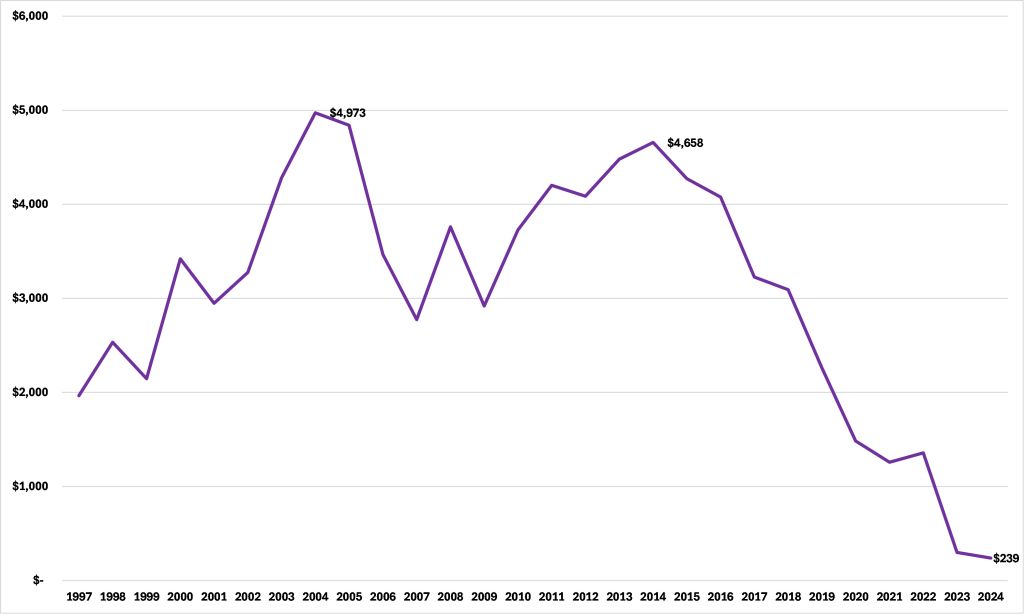The recent film “A Precarious State” has drawn a number of responses, a recurring theme of which is that Minnesota’s problem is its slow growing economy resulting from its slow growing population. This misses the crucial point that what matters for economic welfare is per capita growth. If the overall size of the economy grows because it has more people in it but, on average, those people are no better off — Canada’s story in recent years — then you’re not really growing.
Minnesota’s recent record on per capita Gross Domestic Product (GDP) growth is concerning. Data from the Bureau of Economic Analysis (BEA) show that in nine of the ten years since 2014-2015 real per capita GDP has grown more slowly in our state than for the United States generally, a record better only than Wisconsin’s. As a result, per capita GDP in Minnesota has declined, in real terms, from $4,658 above the level of the United States in 2014 to $239 in 2024.
Figure 1: GDP per capita in Minnesota minus GDP per capita for the United States, 2017$

Why is this?
Per capita economic growth comes from three sources. Growth in human capital, the quantity and quality of the labor provided; growth in physical capital, the tools those workers have to use; and growth in Total Factor Productivity, which is the efficiency with which these factors are combined. Economists use a method called “growth accounting” to break down the growth rate of per capita GDP into the portions arising from each of these three sources. This, in turn, requires the construction of estimates of human and physical capital. I performed this exercise for the 50 states going back to 2008 in my report “Accounting for Growth: Measuring the sources of per capita economic growth at the state level” and the results are available as the American Experiment United States Tables.
The BEA released the data on physical capital in September which allowed me to update the estimates for 2024. As the data come in on the components of human capital which allow me to update that, I will post about them here. The end result will be an in-depth explanation of Minnesota’s relatively poor performance on growth of per capita GDP, the measure which really matters.
Watch this space.










